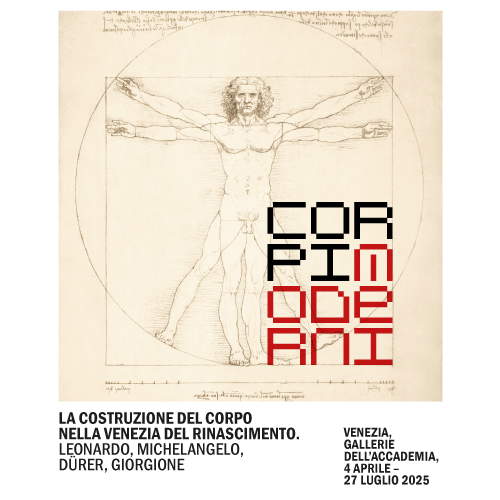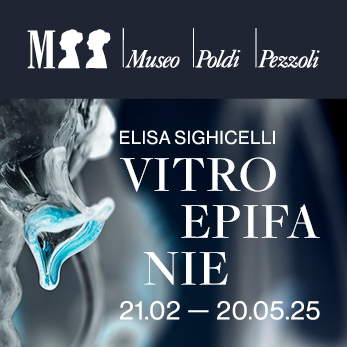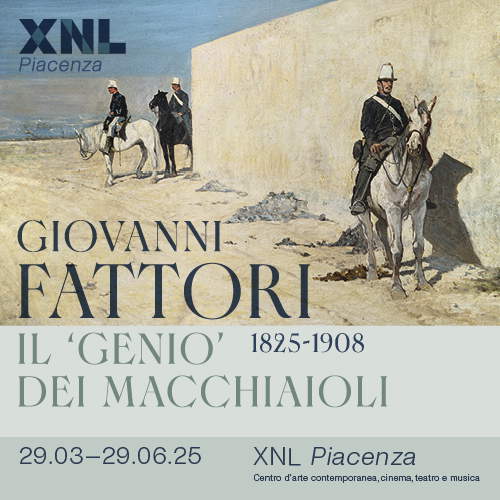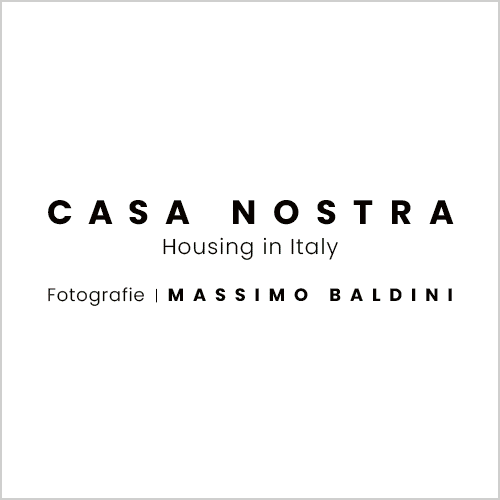The mystery of the parish church of Montesorbo in Romagna
Distant from the hubbub of the road, at 441 meters above sea level, isolated midway between the villages of Sarsina and Ciola, in inland Romagna, a small but precious church of mysterious age insists on the path of San Vicinio. It is the parish church of Montesorbo, nestled in the shade of long, centuries-old cypresses in the lonely valley between the Savio and Borello rivers, near Mercato Saraceno. Of admirable workmanship and Romanesque layout, the parish church does not soar distracting the eye from the landscape but adapts (to it) by following the sinuous line of the horizon.
Recognized as a national monument for its historical and artistic value, the church building of Santa Maria Annunziata, that is its name, appears modest and rural thanks to the optical deception of the simple materials with which its exterior is composed, namely brick, sandstone and plaster. On closer inspection, however, because of a number of elements (the panorama it encounters, its peculiar composition, every detail of construction, the kind of artifacts found inside, fragments and spolia kept, and even the presence of a Madonna and Child, that is, a tempera on linen cloth), the humble-looking little church incredibly transforms itself into a building of refined nobility.
This beauty, however, remains shrouded in mystery. It is as if the parish church never wants to make itself fully known, as if it always wants to remain a little impenetrable. The tradition of local studies has seen in the numerous presence of ancient architectural and sculptural material the pre-existence on the same site of at least one Roman temple, dedicated to the goddess Ceres. The hypothesis is yes fascinating, but for now there is no evidence capable of seriously supporting it, since, as we shall see, there are different dates for the finds and their parts.
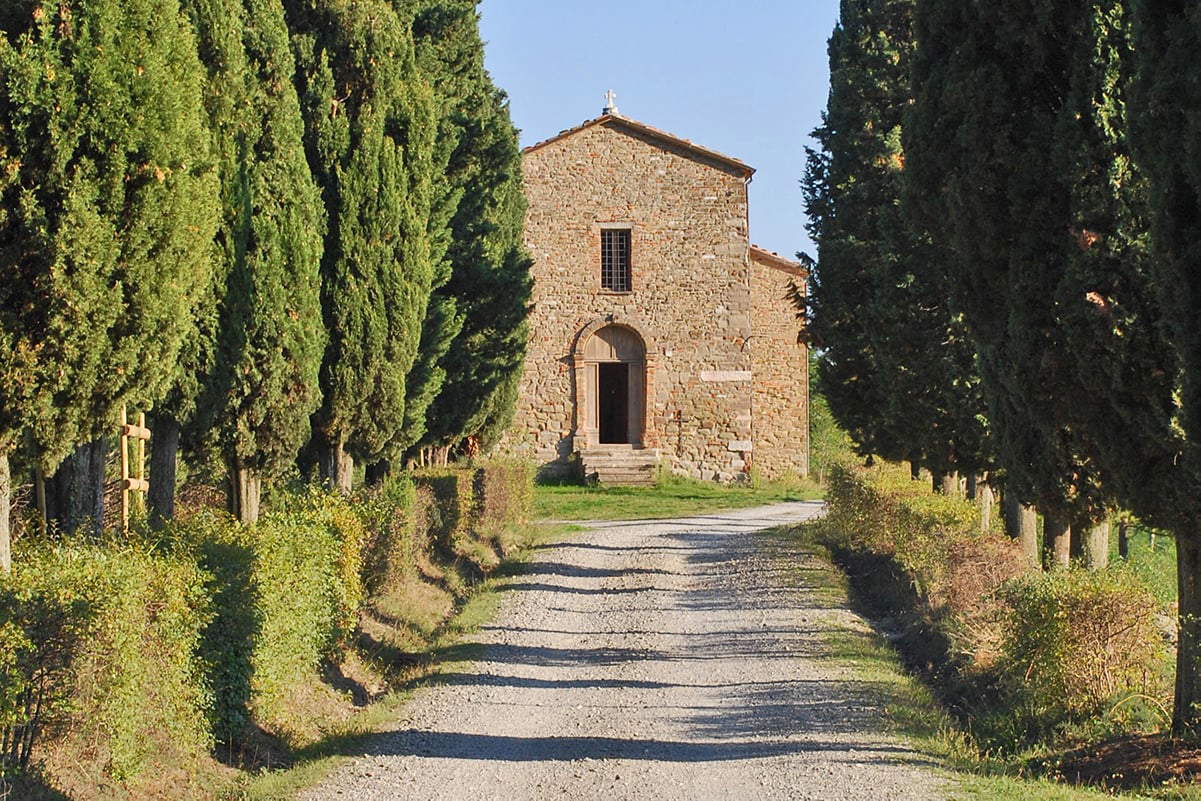
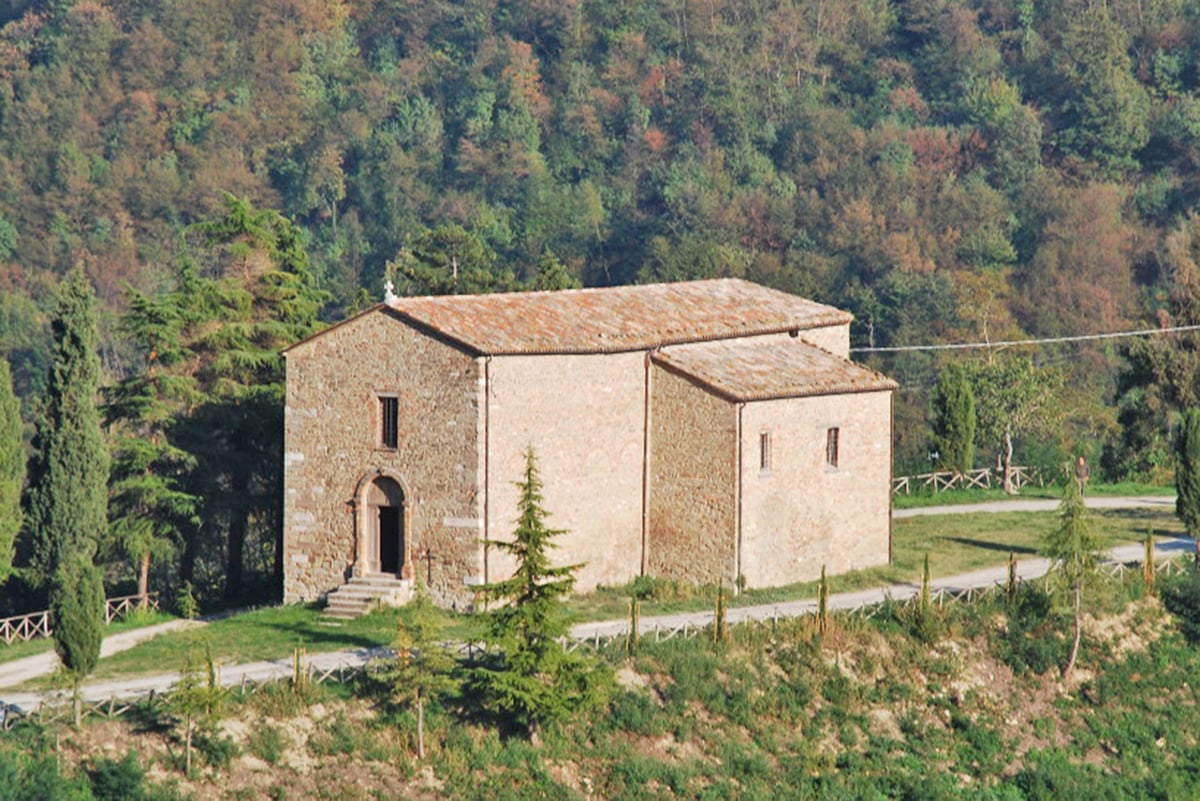
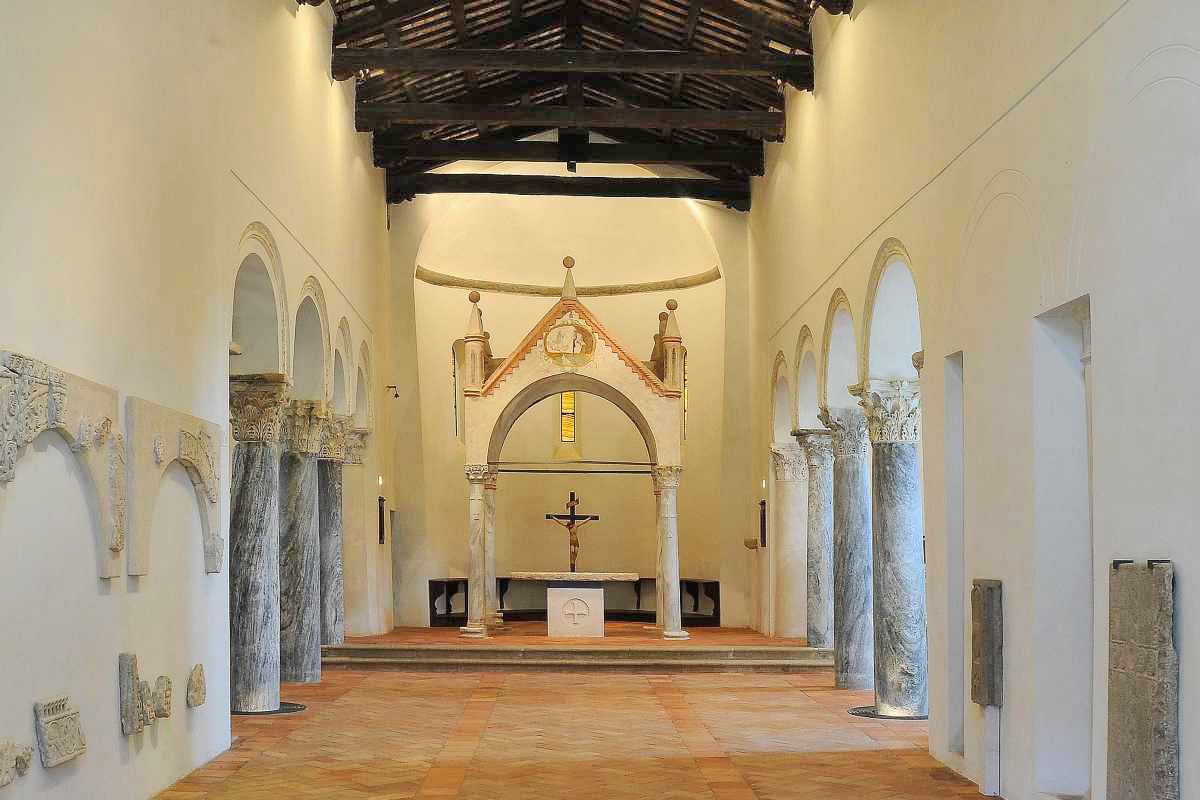
Montesorbo is a singular reality; it is the prototype of other parish churches in the area where art and faith along the route of the pilgrimage of St. Vicinius have convened, compensated and amalgamated. But its uniqueness is also given by another set of factors concerning the different phases of stratification, the numerous documents, finds, ruins, fragments... and above all contradictory dates that lead scholars to “squabble” over the truth of its origins.
The earliest mention of the pieve, a document from 1223 (which has come down to us in a regested copy; the deed, dated October 3, concerns the sale of various goods, by Cacciaguerra da Montepetra, to the bishop of Sarsina and Berardo) would make it compatible with theevidently Romanesque layout of the apse, but when, visiting the Greek-cross interior, we notice the artifacts and fragments present, the early Christian mensa of the high altar, the columns (buried under the floor for more than than a meter), and the capitals of the Roman naves, the splendid reliefs of Lombard workmanship and figuration (comparable to the sculptures of Cividale del Friuli), the remains of early medieval plutei, a slab with a cross and epigraph ofCarolingian art, the four splendid arches of early medieval ciborium with figures of eagles, peacocks, and sea monsters, and the slab of Bishop Florentius from the 10th century, we cannot help but think how complex it is to define once and for all the age and workmanship of the small church.
Although in the documentation found there is a Ravenna parchment dated 867 that, albeit somewhat indirectly, mentions the pievato of Montesorbo. It is necessary, however, to wait until 948 for the first real attestation of the pieve. Several factors therefore contribute to complicate its “deciphering.”
Even if a reliable reconstruction of its architectural phases is rather problematic to achieve, on the contrary, a reading of the numerous and important finds kept inside it would lead to formulate a hypothesis that sees, to begin with, in the little church an original early Christian building arise around the 6th-7th centuries, probably for devotional reasons related to Saint Vicinius. The historical memory of Saint Vicinius that tradition will keep alive for a long time may indeed motivate the laborious transfer of Roman reused material and the persistence of the rich artistic furnishings.
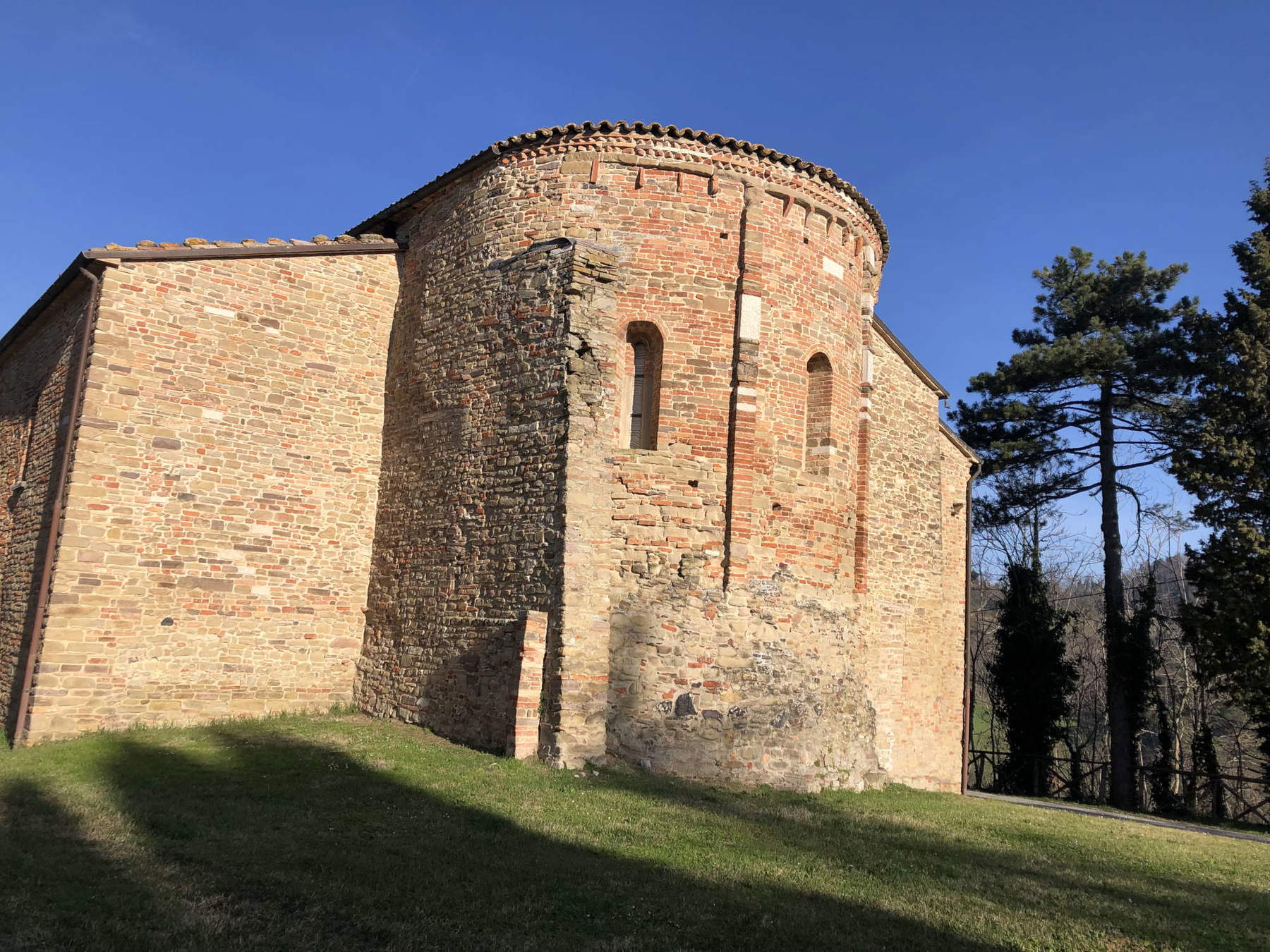
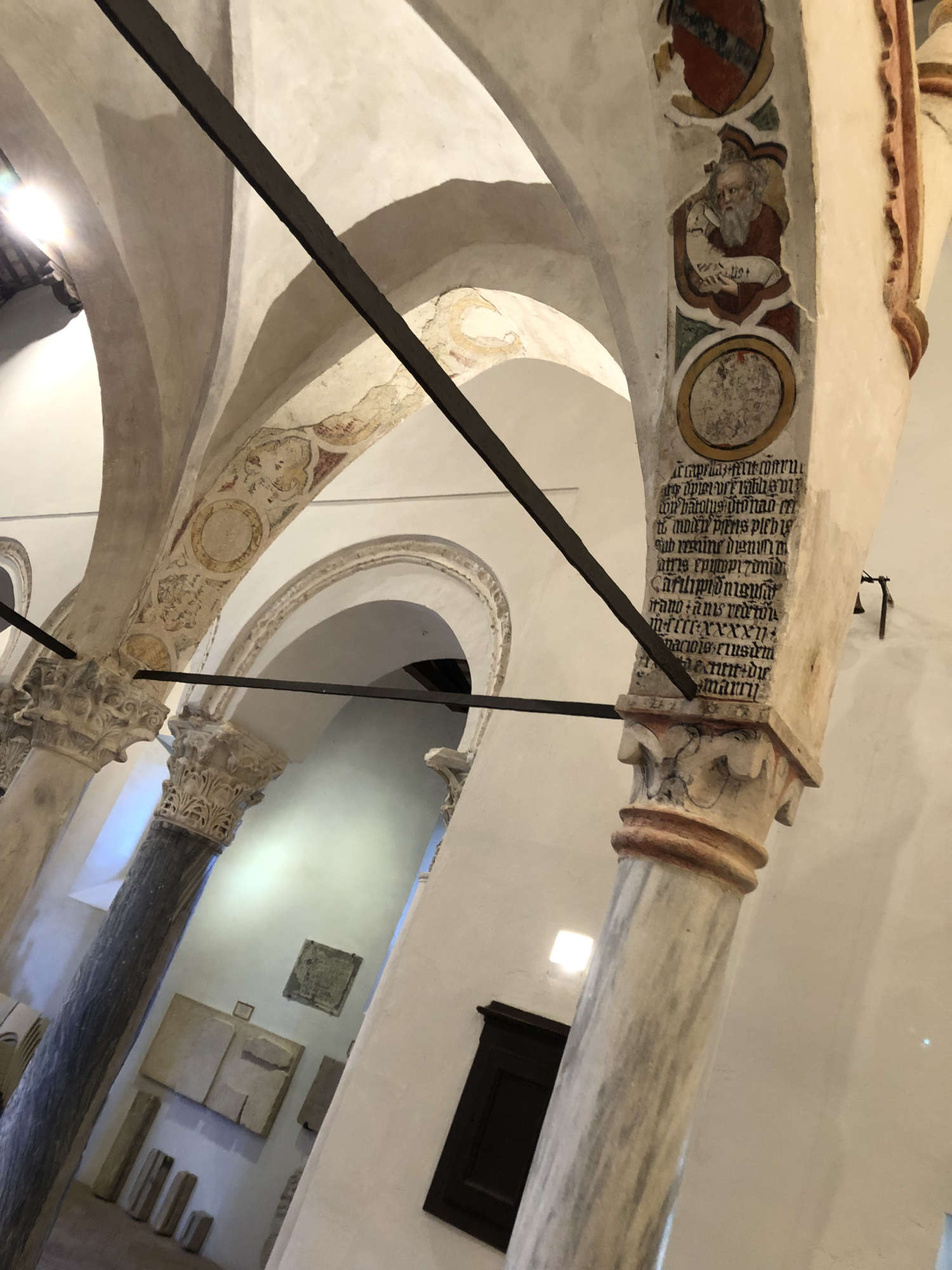
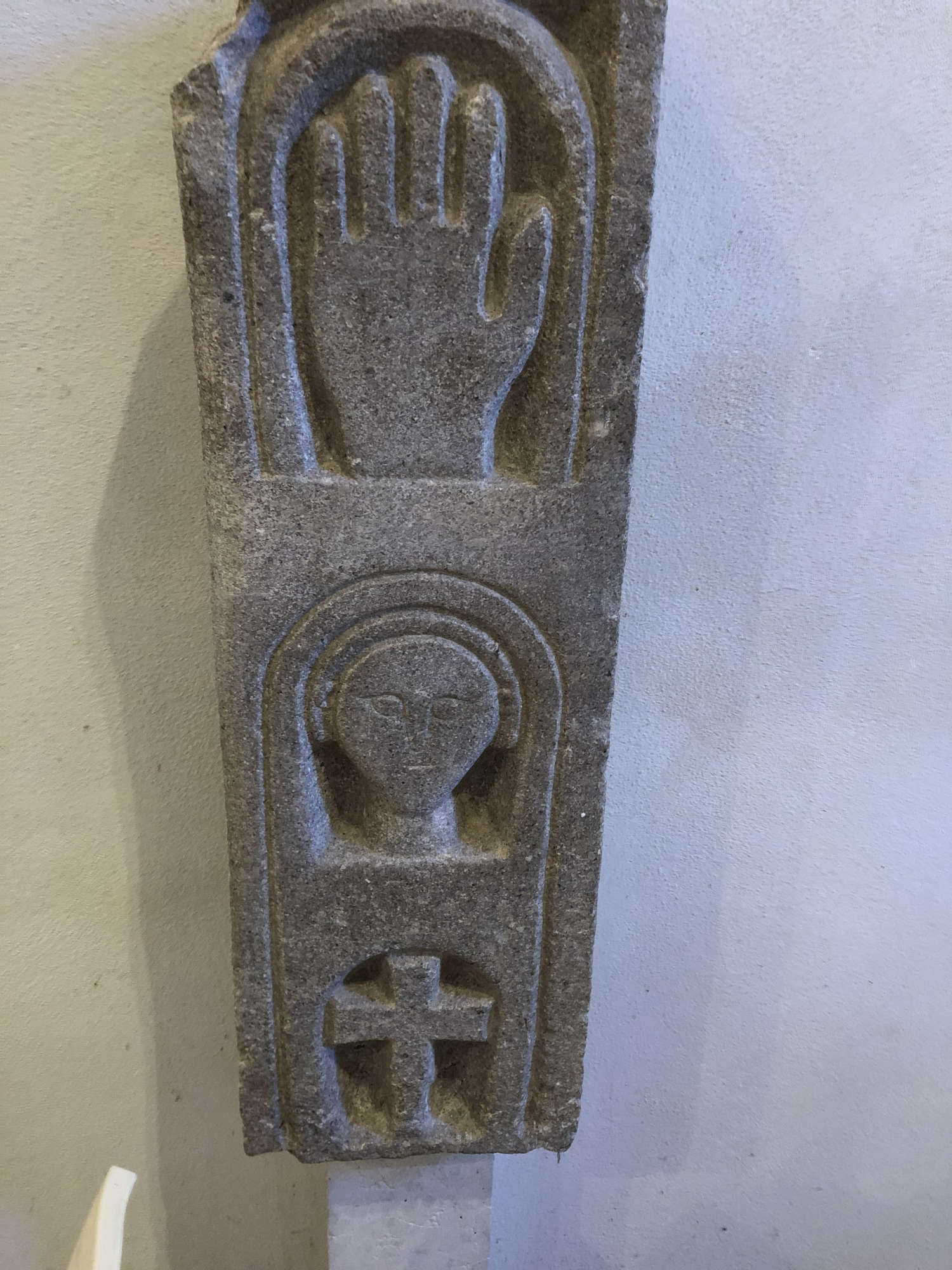
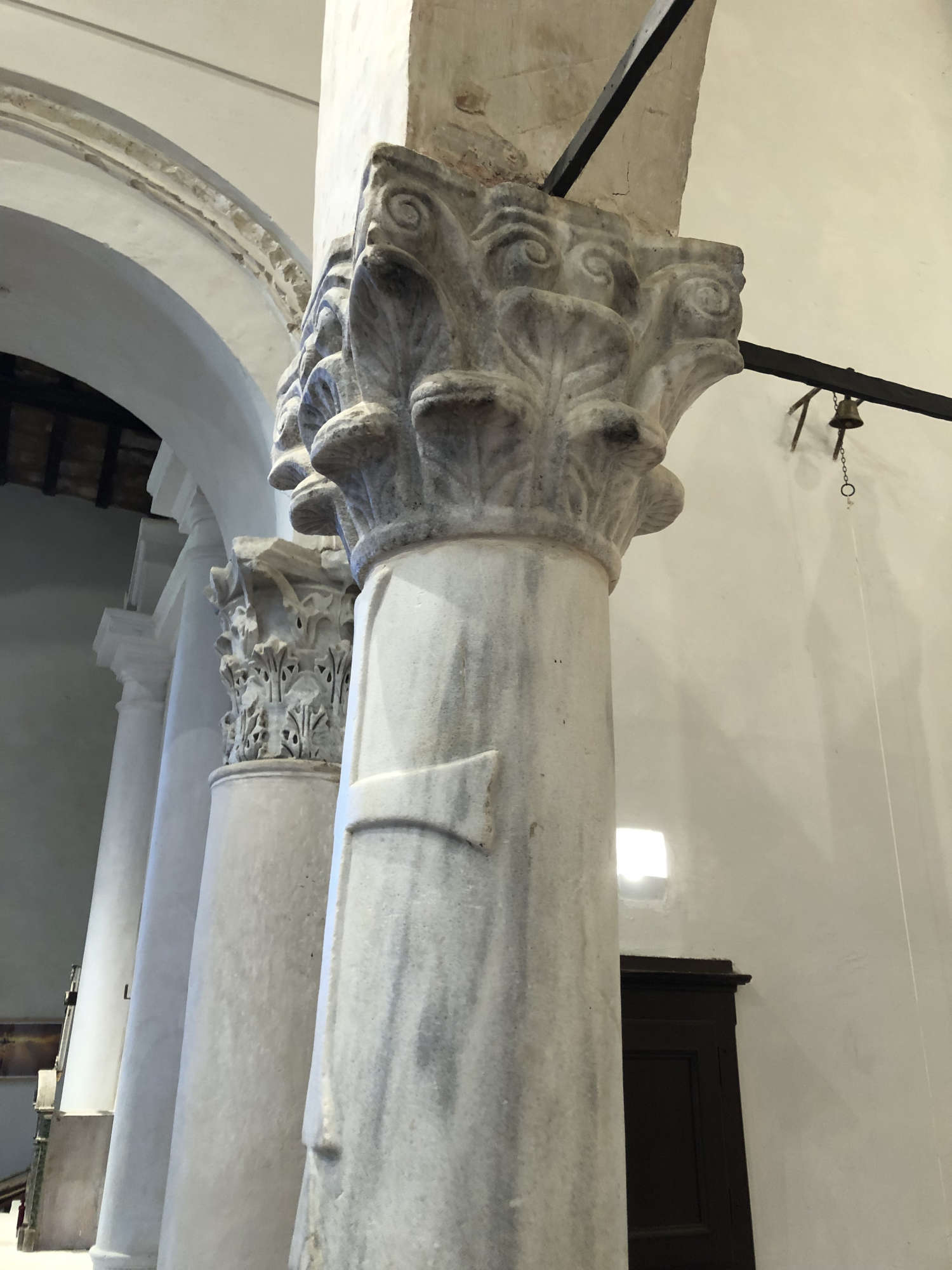
A second phase, between the 8th and 9th centuries, would see the enrichment of the liturgical furnishings with the ciborium, whose fragments are clearly of Lombard origin. To the 10th century could date the building site commissioned by Bishop Florentius, attested by the remains of his tomb slab. At the turn of the 12th-13th centuries lies the Romanesque intervention, perhaps concentrated only on the apse. In 1442 the present ciborium was built, reusing the small columns of the previous one, ruined perhaps by a series of earthquakes that occurred. It was at this time, that is, after the construction of the canopy, that the Madonna adoring the Child was most likely placed.
Having soon become an object of worship, the small tempera (60 x 40 centimeters), restored in 1961, has been attributed to several hands: Antonio Corbara places it in the Urbino culture, Andrea Emiliani to Bartolomeo di Maestro Gentile da Urbino, Pietro Zampetti to an Umbrian painter, and, finally, Bonita Cleri attributes it to an anonymous fifteenth-century artist with an “Adriatic” language.
Prominent in this small monument, in addition to the devotional tempera with the Virgin, is a truly rare fragment, placed in the lapidary of the right aisle, which shows lined up and in bas-relief a hand, a face and a cross. On this point, too, scholars have never reached a unanimous opinion, but the most convincing hypothesis is the one that would have it as a predecessor of our road signs, and therefore would have indicated to pilgrims a place of prayer and refreshment.
In addition to the pleasantness of the experience, stopping here, along the places of the Romagna hinterland, therefore imposes reflection. Surely the parish church would not only be counted, and asphyxiatedly, among the important religious monuments of the area, to be passed around as one of the various tourist stops in hilly Romagna, it should instead demand that a more in-depth and cross-cutting study push it into other more responsible adventures of scientific study and into other interpretive ventures at least on issues such as its origin and its wealth of artifacts. On the contrary, it is still in danger of remaining locked in its mysteries, and in this case it has the right to claim that religious respect for its secrets that, perhaps, ultimately, it does not really want to reveal...
Warning: the translation into English of the original Italian article was created using automatic tools. We undertake to review all articles, but we do not guarantee the total absence of inaccuracies in the translation due to the program. You can find the original by clicking on the ITA button. If you find any mistake,please contact us.





